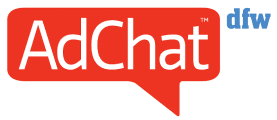Unless you’ve been living under a rock, you know that third-party cookies will soon be a thing of the past. Most browsers like Mozilla Firefox and Microsoft Edge have already phased them out, but Google isn’t just a web browser; it’s an advertising company, so getting rid of third-party cookies is a bit more involved.
Their answer to what comes after third-party cookies is the Privacy Sandbox. While it sounds like a single solution, it’s actually a collection of proposed tools, but if you think the details of Google’s Privacy Sandbox are a simple Google search away, you’d be wrong. Even companies who spend millions of dollars advertising with Google don’t know much about the solutions they’re planning to use in a year.
While there are still a lot of questions yet to be answered, one that especially plagues advertisers is how first-party data can be used in accordance with the Privacy Sandbox.
Can You BYOD (Bring Your Own Data)?
After third-party cookies are disabled, Google wants to stop the targeting of users at an individual level. That means there will only be specific ways Google will allow advertisers to use the first-party data they’ve collected.
Inside of Google’s ecosystem – which includes places like YouTube and Google Ads – advertisers will still be able to do individual-level targeting and campaign measurement by matching first-party data to Google’s first-party data (Google considers its user login data to be its first-party data). When targeting people who are using Google Chrome, or when marketers buy non-Google inventory through Google’s ad exchange, individually targeting users with first-party data becomes much trickier.
Birds of a Feather FLoC Together
FLoC, or Federated Learning of Cohorts, is Google’s answer to tracking people across the internet without building or using alternative identifiers. This method employs machine learning to generate cohorts, groups of thousands of people, for targeting. Cohorts will be built inside the browser based on an algorithmic process that analyzes users’ recently visited websites, the content of previously viewed web pages, and other factors.
To protect the privacy of each user assigned to a cohort, everyone in a cohort will be given a cohort ID, also known as a FLoC ID. A single FLoC ID will represent an entire cohort of people, and DSPs, advertisers, and even Google’s ad exchange will only have access to this identifier when targeting users.
With FLoC, advertisers will only use first-party data to analyze correlations between what brands know about their audiences and the cohorts the FLoC method generates. Brands won’t be able to track or target individuals, but they will at least be able to determine which cohorts they wish to target.
A FLEDGE-ling Proposal
For advertisers who want to create and deploy their own audiences without using third-party cookies, such as in the case of remarketing campaigns, Google has proposed FLEDGE (First Locally-Executed Decision over Groups Experiment). Using this Privacy Sandbox method, advertisers will be able to use their first-party data in conjunction with FLEDGE to target ads at interest groups.
Advertisers will be able to create interest groups based on their first-party data, which can be uploaded to a “trusted server” (where information about an ad campaign’s bids and budgets will be stored). With the help of the Privacy Sandbox API, the people reflected in that first-party data will see ads targeted using the FLEDGE method.
Excavating Google’s Privacy Sandbox
There’s still a lot of unanswered questions about Google’s proposals. How will ad bids be determined for interest groups and cohorts? How exactly will machine learning be used to create specific cohorts? Will the FLoC method reduce the harms of behavioral advertising (i.e., discriminating, exploiting, or predatorily targeting vulnerable populations)?
Early indications are that advertisers will have to rethink their strategies in response to the Privacy Sandbox. Instead of relying on very granular tracking and measurement metrics as we’re accustomed to, we will need to broaden our approach. While it’s not entirely clear how we will use first-party data, we also foresee it becoming much more important to target users. In fact, we’ve already started to apply this thinking to our current campaigns.
While we don’t have all the answers yet, your media stewards at The Ward Group are digging into all the updates to make sure we’re ready for this very near future without third-party cookies. If you have any questions or concerns about future digital media buying methods, contact The Ward Group today.
Original Content










